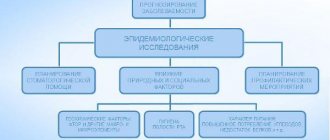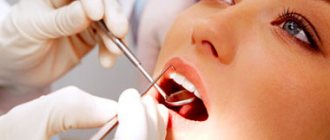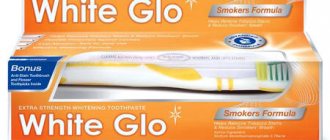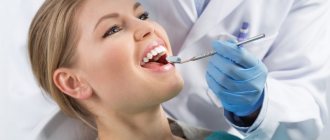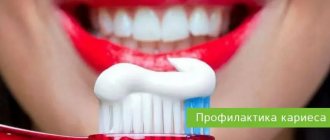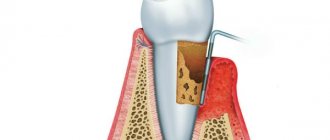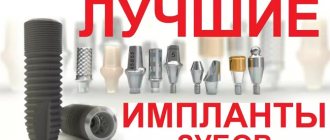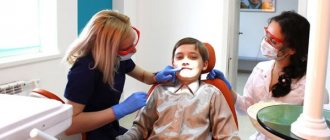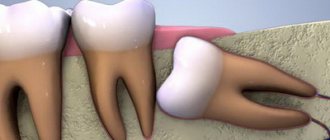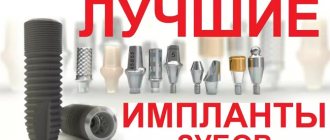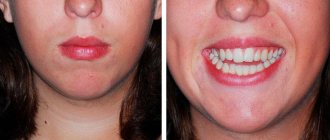Oral hygiene is one of the most accessible and at the same time one of the leading methods of preventing oral diseases. Regular and competent oral care is an integral part of all preventive measures. Mass population surveys conducted in all countries of the world have convincingly shown that systematic oral care has an undoubted preventive value. It is possible to objectively assess the level of oral hygiene only using hygiene indices.
To identify dental plaque in assessing oral hygiene in modern dentistry, objective indicators (indices) are used that characterize the quality and quantity of dental plaque. However, the number of assessment methods, which are based on different numbers of teeth from different functional groups, up to staining all teeth on both sides or collecting and weighing plaque around individual teeth, indicates the relevance of the problem under consideration and the imperfection of existing methods.
Oral hygiene indices.
Method for determining the Fedorov-Volodkina hygienic index // E.M. Melnichenko “Prevention of dental diseases”, Minsk, “Higher School”., 1990, pp. 3-17.
It is determined by the intensity of the color of the vestibular surface of the six lower frontal teeth by applying an iodine-iodide-potassium solution (Schiller-Pisarev liquid).
The calculation is carried out according to the formula:
Ksr (hygiene index) = Kn (total hygiene index for each of the six teeth) / n (number of teeth).
Coloring the entire surface of the crown is scored 5 points, 3/4 of the surface - 4, 1/2 of the surface - 3, 1/4 of the surface - 2 points. If there is no staining, 1 point is given. The indicator is assessed as follows: good index, satisfactory, unsatisfactory, bad, very bad.
However, the proposed method has a number of disadvantages:
— determination of the quality and quantity of dental plaque, assessment of the hygiene index was carried out only on one’s own teeth; — the use of known dyes is impossible when determining the amount of dental plaque on bridges, since these solutions are difficult to wash off from the surface of the dentures.
| Name | Facilities diagnostics | Self-control criteria |
| 1. Fedorov-Volodkina index | Lugol's solution 1.1-1.5 is good 1.6-2.0 - satisfactory 2.1-2.5 - unsatisfactory 2.6-3.4 - bad 3.5-5.0 - very bad | The vestibular surface of the six front teeth of the lower jaw - incisors and canines - is stained with Lugol's solution. Rating on a 5-point system: 5 points – the entire surface of the teeth is stained, 4 points – 3/4 of the tooth surface, 3 points - 1/2 of the tooth surface, 2 points - 1/4 of the tooth surface, 1 point - no staining Then find the arithmetic mean by dividing the sum of the color of all teeth by their number: K av = Kp: p. Good level of hygiene: Ksr=1.0-1.3 b IG = sum of points of six teeth 6. |
| 2. Green-Vermilion Index (1964) - universal hygiene index of the UIG | Schiller-Pisarev solution or Lugol's solution 0-0.6 good 0.7-1.6 satisfactory 1.7-2.5 unsatisfactory 2.6-3 - bad | Determine the presence of plaque and tartar on the buccal surface of the first upper molars, the lingual surface of the lower molars, and the vestibular surface 1| and lower |1 6 1| 6 6 | 1 6. On all surfaces, plaque is first determined, then tartar. 0 - no plaque (stone) 1 - plaque covers up to 1/3 of the tooth surface 2 - plaque covers from 1/3 to 2/3 of the tooth surface 3 – plaque covers more than 2/3 of the tooth surface Tartar assessment: 0 – absence of tartar 1 – supragingival tartar covers no more than 1/3 of the tooth crown 2 – supragingival tartar covers from 1/3 to 2/3 of the tooth crown, or single formations of subgingival tartar are detected 3 – supragingival tartar covers more than 2/3 of the tooth crown, or significant deposits of subgingival tartar are detected along the entire circumference of the tooth. SPI = sum of indicators of 6 teeth 6 The assessment of the tartar index is carried out similarly to UIG = IZN + IZK |
| 3. Index ONI-S | Schiller-Pisarev solution 0-no staining 1- staining up to 1/3 of the crown, 2- staining up to 2/3 of the crown 3- more than 2/3 of the tooth crown | Staining of the vestibular and lingual surfaces 6 1 | 6 6 | 1 6 The plaque index and stone index are summed up and the average is obtained. |
| RHP Index – Oral Hygiene Performance Index (Podshadley, Haley – 1968) | Color 6 teeth: 16, 26, 11, 31 – vestibular surfaces. 36, 46 – lingual surfaces | The examined surface is divided into 5 sections: 1-medial, 2-distal, 3-mid-occlusal, 4-central, 5-mid-cervical. Plaque is assessed at each site: 0 – no staining 1 – staining detected For each tooth, the site codes are summed up. Then the values of all examined teeth are summed up and the resulting sum is divided by the number of teeth. Index values: 0 - excellent 0.1-0.6 – good 0.7-1.6 – satisfactory 1.7 or more - unsatisfactory |
Determination methods
There are over 10 variants of disease classifications, which are based on diagnosis based on clinical manifestations. In the practice of our clinic, we use the most developed methods that take into account the key symptoms of the disease, which have objectively proven their informative value in prevention and treatment.
Periodontal risk indexes for systemic infection (PIRI)
Modern technology for periodontal screening, eliminating the possibility of subjective errors in diagnosis. The PIRI analysis evaluates periodontitis as a biological disease that can lead to systemic pathology. This approach more accurately integrates the relationship between oral tissue damage and the risk of transfer of pathogens and toxins to other organs. The basis of the method is the diagnosis of ulcerated areas open to infectious bacterial load and clarification of the degree of risk of periodontal-systemic complications.
When calculating, the following are measured:
- Number, depth of periodontal pockets.
- Amount, degree of bone loss (furcation lesion).
The examination is painless and quick. All measurements are recorded and calculated automatically. A printout of the results can be given to the patient or sent to a personal mailbox. The risk of systemic infection is assessed as low to severe.
Russell periodontal index
It is carried out taking into account the gingivitis index according to Silnes Low. The severity of periodontal destruction - gingivitis, the depth of the true periodontal pocket, mobility is taken into account:
- no symptoms identified
- mild segmental gingivitis
- inflammation of the free gum around the crown
- gingivitis, resorption of bone interdental septa is planned
- IG 2.0, pathological pocket, tooth displacement is not diagnosed
- Destruction of mucous and connective tissues, intraosseous pocket, resorption, pathological mobility
The calculation formula is standard: the total score is divided by the number of examinations. The degree of diagnosis ranges from mild to severe. Clinical norm index 0-0.2.
Complex periodontal index PI
Studying the severity of destructive changes in the periodontium that appear due to inflammatory processes. The diagnostic method is visual and instrumental. The presence of hard dental deposits, the level of bleeding of the gingival groove, subgingival calculus, breaks in the epithelial attachment, and pathology of tooth mobility are assessed. The detected signal is recorded with a digital code for each tooth examined. When indexing, the patient's age is taken into account.
The summed total is divided by the number of probed units.
During the study, the individual and average CPI index is determined, and the assessment of the degree of likelihood of the disease or its complications is clarified.
Index of need for periodontal disease treatment - CPITN
To assess the prevalence and intensity of periodontal diseases, almost all countries use the index of need for the treatment of periodontal diseases - CPITN . This index was proposed by specialists of the WHO working group to assess the condition of periodontal tissues during epidemiological surveys of the population.
Currently, the scope of the index has expanded, and it is used to plan and evaluate the effectiveness of prevention programs, as well as calculate the required number of dental personnel. In addition, the CPITN index is currently used in clinical practice to examine and monitor the periodontal condition of individual patients.
In this regard, the CPITN index can be considered a screening test at both the population and individual levels.
This index registers only those clinical signs that may undergo reverse development: inflammatory changes in the gums, which are judged by bleeding, tartar. The index does not record irreversible changes (gingival recession, tooth mobility, loss of epithelial attachment), does not indicate the activity of the process and cannot be used to plan specific clinical treatment in patients with developed periodontitis.
The main advantages of the CPITN index are the simplicity and speed of its determination, information content and the ability to compare results.
To determine the CPITN index, the dentition is conventionally divided into 6 parts (sextants), including the following teeth: 17/16, 11, 26/27, 36/37, 31, 46/47.
The periodontium is examined in each sextant, and for epidemiological purposes only in the area of the so-called “index” teeth. When using the index for clinical practice, the periodontium is examined in the area of all teeth and the most severe lesion is identified.
It should be remembered that a sextant is examined if it contains two or more teeth that cannot be removed. If only one tooth remains in the sextant, it is included in the adjacent sextant, and this sextant is excluded from the examination.
In the adult population, starting from 20 years of age and older, 10 index teeth are examined, which are identified as the most informative:
When examining each pair of molars, only one code characterizing the worst condition is taken into account and recorded.
For persons under 20 years of age, 6 index teeth are examined during the epidemiological survey: 16, 11, 26, 36, 31, 46.
CODE 1: bleeding observed during or after probing.
Note: bleeding may appear immediately or after 10-30 seconds. after probing.
CODE 2: tartar or other plaque-retaining factors (overhanging edges of fillings, etc.) are visible or felt during probing.
CODE 3: pathological pocket 4 or 5 mm (the edge of the gum is in the black area of the probe or the 3.5 mm mark is hidden).
CODE 4: pathological pocket 6 mm deep or more (with the 5.5 mm mark or black area of the probe hidden in the pocket).
CODE X: When only one or no teeth are present in the sextant (third molars are excluded unless they are in place of second molars).
To determine the need for periodontal disease treatment, population groups or individual patients can be categorized based on the following criteria.
0: CODE 0 (healthy) or X (excluded) for all 6 sextants means that there is no need for treatment for this patient.
1: A CODE of 1 or higher indicates that this patient needs to improve his oral hygiene status.
2: a) CODE 2 or higher indicates the need for professional hygiene and the elimination of factors that contribute to plaque retention. In addition, the patient needs training in oral hygiene.
b) CODE 3 indicates the need for oral hygiene and curettage, which usually reduces inflammation and reduces pocket depth to values equal to or less than 3 mm.
3: Sextant with CODE 4 can sometimes be successfully treated with deep curettage and adequate oral hygiene. In other cases, this treatment does not help, and then complex treatment is required, which includes deep curettage.
The prevalence and intensity of periodontal disease in the population is assessed based on the results of a survey of 15-year-old adolescents.
Prevalence of signs of periodontal damage (adolescents 15 years old)
Prevalence Bleeding gums Tartar
low 0 – 50% 0 – 20%
average 51 – 80% 21 – 50%
high 81 – 100% 51 – 100%
Level of intensity of signs of periodontal damage (adolescents 15 years old)
INTENSITY LEVEL BLEEDING GUMS CALCULUS
LOW 0.0 - 0.5 sextants 0.0 - 1.5 sextants
AVERAGE 0.6 - 1.5 sextants 1.6 - 2.5 sextants
HIGH < 1.6 sextants < 2.6 sextants
Definition goals
To reliably assess the dental status of periodontal diseases, our center uses a set of objective tests. Periodontal indices in dentistry are a rational comparison of the results of studying the disease over time. The mathematical scoring system is used for the following purposes:
- identifying and eliminating causative predisposing factors;
- taking measures to prescribe therapeutic and preventive measures to prevent the occurrence of a pathological process;
- timely diagnosis of deterioration of periodontal condition;
- monitoring changes in the condition of the mucous membrane;
- control of the treatment process.
Periodontitis is one of the most common forms of dental diseases, regardless of a person’s age and social status. Inflammations can be acute or chronic. They are divided into reversible, irreversible, complicated.
Gingivitis index PMA (Schour, Massler) modified by Parma
Gingivitis index PMA (Schour, Massler) as modified by Parma (determination of risk factors) - papillary-marginal-alveolar index is calculated by adding the assessments of the gum condition of each tooth in % using the formula:
RMA = sum of indicators x 100%
3 x number of teeth
0 - no inflammation,
1 - inflammation of the interdental papilla (P)
2 - inflammation of the marginal gum (M)
3 - inflammation of the alveolar gum (A)
At the age of 6-7 years, the number of teeth is normally 24, at 12-14 years - 28, and at 15 years and older - 28 or 30.
The PMA index is very sensitive to the slightest changes in the clinical picture, and its value can be influenced by random influences.
Complex periodontal index (P.A. Leus, 1988).
⇐ PreviousPage 6 of 10Next ⇒
It is used for group determination of periodontal status in the population of all age groups during mass examinations. It represents the average value of signs of periodontal damage (from risk factors to the developed stage of the disease).
WHO recommends conducting epidemiological studies in the age groups: 12 years, 15 years, 35-44 and 65-74 years. In one age group there must be at least 20 people living in the same locality and examined according to the principle of random selection.
Depending on the age of the subject, different teeth are studied:
3-4 years - 55, 51, 65, 75, 71, 85;
7-14 years old - 16, 11, 26, 36, 31, 46;
15 years and older - 16(17), 11, 26(27), 36(37), 31, 46(47).
The author does not recommend using the CPI for examining children under 3 years of age and 5-6 years of age.
If there is no tooth to be examined, the nearest tooth within the group of the same name can be studied. If all the teeth of the same group are missing, then the maximum severity of the periodontal condition is recorded. If a number of signs are present, a more severe lesion is recorded (higher score). In case of doubt, preference is given to underdiagnosis.
Method of determination. To determine signs of periodontal damage (bleeding, tartar, gingival or periodontal pockets), as well as dental plaque, a dental probe is used; to determine pathological tooth mobility, a probe and tweezers are used. Expressed in points:
0 - healthy periodontium (dental plaque and signs of periodontal damage are not detected during examination using instruments);
1 - dental plaque (any amount of soft white plaque determined by a probe on the surface of the tooth crown, in the interdental spaces or in the gingival area);
2 - bleeding (bleeding visible to the naked eye upon slight probing of the periodontal groove or pocket);
3 - tartar (any amount of hard deposits in the subgingival area of the tooth);
4 - pocket (gingival or periodontal pocket, determined by a probe);
5 - tooth mobility (pathological tooth mobility of II-III degree).
KPI is determined by formulas
for an individual:
S
KPIi = ¾¾¾
n
where S is the sum of points of each tooth; n is the number of teeth being examined;
average KPI for the study group:
S CPII
KPISR. = ¾¾¾¾¾
n
where S KPI is the sum of individual KPI points; n is the number of examined persons.
Evaluation of results.
0.1-1.0 - risk of disease;
1.1-2.0 - mild damage;
2.1-3.5 - moderate damage;
3.6-5.0 - severe damage.
Combined periodontal index for epidemiological studies (KPIE, T.V. Nikitina, 1982).
Method of determination. Inflammation of the gums (B) is assessed by vacuum test or clinically, loss of bone tissue (D) in the area of 17, 12, 21, 26, 37, 32, 41, 46 teeth, and the prevalence of the process (P) near each tooth in points.
Inflammation score (B):
0—Kulazhenko vacuum test is within normal limits (clinically—no bleeding);
1 - decrease in Kulazhenko vacuum test indicators by 1.5 times, but not more than 3 times (clinically - weak bleeding);
2 - decrease in the indicators of the Kulazhenko vacuum test by 3 times, but not more than 4 times (clinically - significant bleeding);
3 - decrease in Kulazhenko vacuum test indicators by 4 times or more (clinically - spontaneous bleeding).
Bone loss assessment (D):
0 - absence of periodontal pockets;
2 - the distance from the enamel-cement border to the bottom of the periodontal pocket is no more than 2 mm;
4 - the distance from the enamel-cement border to the bottom of the periodontal pocket is from 2 to 4 mm;
6 - the distance from the enamel-cement border to the bottom of the periodontal pocket is from 4 to 6 mm;
8 - the distance from the enamel-cement border to the bottom of the periodontal pocket is 6 mm or more.
Assessment of the prevalence of the process (P):
— visually count the number of teeth near which signs of the inflammatory-dystrophic process are noted and divide by the total number of teeth.
The KPI calculation is carried out using the formula:
S (B + D) R
KPIE = ¾¾¾¾¾¾ x ¾¾¾,
8 n
where S (B + D) is the sum of points near the examined teeth;
8 — number of teeth examined;
P - number of teeth with signs of inflammatory-dystrophic process;
n is the total number of teeth.
SECTION 3.
PM.02. Carrying out individual and professional oral hygiene
MDK. 02.01. Oral hygiene
Learning objectives of this section:
The student must gain practical experience:
1. assessing the hygienic state of the patient’s oral cavity using hygiene indices;
2. determining the condition of periodontal tissues;
3. training patients of various age groups in methods of using individual oral hygiene products and items;
4. individual selection of oral hygiene products and items depending on the age and condition of the patient’s oral cavity;
5. selection of instruments, means and materials for carrying out activities on professional oral hygiene;
6. carrying out activities on professional oral hygiene;
The student must learn:
1. assess the condition of periodontal tissues;
2. plan and implement hygienic measures depending on the condition of hard dental tissues, periodontal tissues, oral mucosa and the patient’s age;
3. develop tactics and schemes for carrying out hygienic measures for oral care for patients using removable/non-removable orthopedic/orthodontic structures;
4. use dental devices and equipment in accordance with the rules of technical operation;
Necessary tools, equipment and materials:
— dental office equipment
- sterile trays with a set of instruments
— necessary medical documentation forms
- individual protection means
— necessary tools and equipment for sterilization of dental equipment
instruments and dressings
— drugs for the diagnosis and prevention of major dental diseases
Requirements for carrying out manipulations:
- manipulations are carried out in sterile gowns, masks, caps, gloves and
safety glasses.
Algorithm for applying fluoride-containing varnish
Methodology:
Fluoride varnish is recommended to be applied to the teeth three times with an interval of three days. Course of treatment 3-4 times a year .
1. Clean the tooth(s) from plaque.
2.
We isolate the tooth from saliva.
3. Thoroughly dry the tooth surface.
4. Apply the varnish in a thin layer using a brush.
5. Excess varnish that gets on the oral mucosa is removed.
6. Dry the tooth surface with air.
7. After 4-5 minutes the varnish dries, and then the patient should not
brush your teeth and eat very solid foods.
8. We give recommendations:
- do not eat food for 2 hours
- do not eat rough food for 24 hours
- do not brush your teeth at night the day after the procedure
Algorithm for remineralizing therapy
Algorithm for performing a simple medical procedure
Remineralizing preparations “Kolesov Method”
Goal: remineralization of the decalcified area.
Indications: treatment of TTZ hyperesthesia, restoration of enamel area.
Contraindications: individual intolerance.
Equipment: preparation and brush.
Execution algorithm
1.Preparation:
-explain the process and purpose of the procedure
– clean the tooth surface with a toothbrush and hygienic toothpaste
- dry with a stream of warm air
- isolate from saliva
2.Performing the procedure:
- apply a 10% solution of calcium gluconate to all surfaces of the teeth of the upper and lower jaws for 20 minutes
- remove tampons with the previous solution
-1-2% sodium fluoride 2-3 minutes
3.Complete the procedure: recommendations
-dry the preparation with a stream of air
— course of 10-20 procedures, daily or every other day
Note: with this technique, drugs can be administered using electrophoresis, and a 2% sodium fluoride solution is administered after the 3rd application of a 10% calcium gluconate solution
Algorithm for performing a simple medical procedure
⇐ Previous6Next ⇒
Recommended pages:
Iodine index of enamel remineralization.
The active permeability of iodine in tooth tissue is known. Remineralization index (RI), which characterizes the effectiveness of the remineralization therapy used. It is assessed using a four-point system:
1 point – no staining of the tooth area;
2 points - light yellow coloration of the tooth area;
3 points - light brown or yellow staining of the tooth area;
4 points - dark brown staining of the tooth area.
The calculation is carried out according to the formula:
IR = IRNP x number of teeth with hypersensitivity / n,
where IR is the remineralization index;
RRI—remineralization index of one non-carious lesion;
n is the number of teeth being examined.
Dark brown and light brown staining indicates demineralization of the tooth area with non-carious lesions; light yellow - indicates a certain level of remineralization processes in this area of the tooth, and the absence of staining or its slightly yellow color demonstrates a good level of the remineralization process of a particular non-carious tooth lesion.
